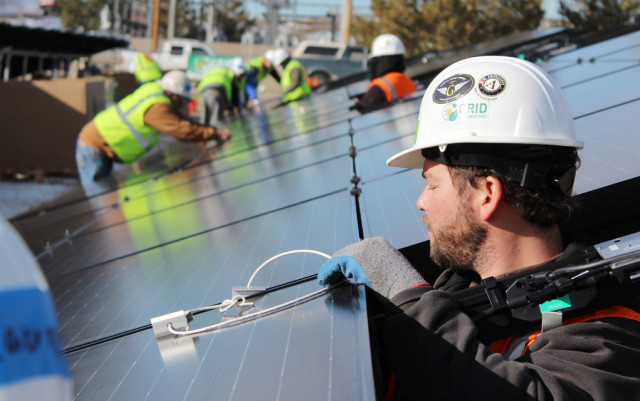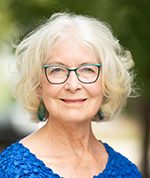
To witness the character of the western United States is to observe its rural communities. The West’s beauty is defined by its sprawling expanse, and that vastness gives home to some remote living circumstances. The seclusion is part of the area’s charm, to be sure. But that same seclusion can create difficulties in providing rural residents with utilities such as electricity. The situation is exacerbated when some of these residents live on limited incomes, and can spend up to 12 percent of their annual earnings just to power their homes.
To combat this pricey cost-of-living expense, an alternative energy solutions company, GRID Alternatives (GRID), is working to build solar arrays that will provide sustainable power to five low-income communities throughout rural Colorado. The Colorado Energy Office (CEO) provided GRID with a $1.2 million grant in August 2015. CEO has been working with rural Colorado energy co-ops and municipal utilities to work toward Colorado’s new renewable energy standards under senate bills 13-252 and 15-254, which require investor-owned utilities such as Xcel energy to garner 30 percent of their electricity from renewable sources by 2020, and for energy cooperatives to garner 20 percent. As it stands, low-income communities are often the last to see new technology as it becomes available.
“Across the country there is a very specific demographic that tends to be left out of access. And that’s the population that we’re working with,” says Kristina Sickles, development director of GRID’s Colorado project.
GRID is working with affordable housing agencies like Habitat for Humanity to reach out to individuals and families that qualify as low to moderate income, which is here defined as earning 80 percent or below of the area’s median income.
According to Sickles, average income households spend about 4 percent of their annual income on energy costs. Taking a look at their low-to-moderate income counterparts, those expenditures rise up to 10 and 12 percent. “What we are attempting to do is make that expenditure more equitable across households,” she says.
Sickles sees Colorado as the legislative and developmental birthplace of community solar projects. GRID has historical roots as a company installing individual rooftop solar arrays on homes in California. But here in Colorado, she says, the scope of sustainability has reached beyond rooftops — and beyond individual households.
About 75 percent of the country couldn’t use rooftop solar if they wanted to; they either rent their homes or don’t have a viable rooftop for solar. GRID’s community solar model utilizes offsite solar arrays that power the entirety of the communities they service. Individual solar panels on the array are designated to specific households, and power is wired from the array to those homes.
“There’s a lot of development right now in community solar focusing on making sure individual households have access to renewable energy whether or not they have a rooftop and a property that is appropriate for solar access,” says Sickles.
The prospect of sustainable energy is attractive — clean, renewable power that weans our society from our reliance on diminishing fossil fuel resources. But expensive installation costs have kept many who would be willing to switch to solar from doing so. Tom Figel, the policy and regulatory manager for GRID’s community solar project, sees the fact that the brunt of efforts toward sustainability have been targeted toward the affluent as an economic justice issue.
“If we’re going to be successful in a clean energy transition, which affects everyone and affects underserved, disadvantaged communities the most, we need to include everyone in the transition to be successful,” he says.
Wally Shaw is a Grand Valley resident who is participating in GRID’s community solar program. In cooperation with GRID, the Grand Valley Power electric utility company installed a solar array that began to provide Wally’s community with power in summer 2015. The community was offered the opportunity to chip in on the project as well as wire into the new source of clean energy.
“They had a big work day down there at Grand Valley Power, where all the ones that were getting the solar could help install the solar panels and get a hands-on experience on how the whole process worked,” Shaw says.
Community solar is not the only sustainable energy solution available to communities like Shaw’s in Grand Valley. But it is the only affordable one.
“A lot of the rural areas don’t have access to the low-cost solar because it was only available here through Xcel energy,” Shaw says. “I first had checked into that, getting solar panels, and I couldn’t afford the price.”
Xcel was estimating a cost of $17,000 to install solar panels on Shaw’s property — a high number was not justifiable by the tax credit that the panels would provide. Many rural residents like Shaw don’t have the means to dish out so much money for the marginal return on their investment.
GRID’s program is designed to help Coloradans like Shaw and their communities transition to clean energy solutions without requiring a bottom line of disposable income.
Shaw says his connection to the community solar array can save him 45 percent on his electrical bill some months.
Many of the rural communities GRID is operating within are transitioning coal economies, according to Figel. As the state of Colorado increasingly converts to renewable energy solutions, jobs provided by the coal industry dwindle. A part of GRID’s mission is to provide access to job training for the underserved communities they work in, which can help to combat job loss in communities that can least afford it. Their barn-raising installation model engages the community and its businesses in the construction of the solar arrays, and Shaw says that in Grand Valley, local businesses chipped in to help build the array that powers his community.
With Colorado paving the way for sustainable energy on both the legislative and commercial fronts, community solar is an effort to include everyone in a conversation about technology that would previously be fiscally impossible for many folks.
“Programs like these start to broaden access for everyone, and again I think that’s just essential to achieving a clean energy transition,” Figel says.
Expanding access to the benefits of sustainable innovation is one of many steps in an ongoing process toward environmental equity in Colorado.
Respond: [email protected]














